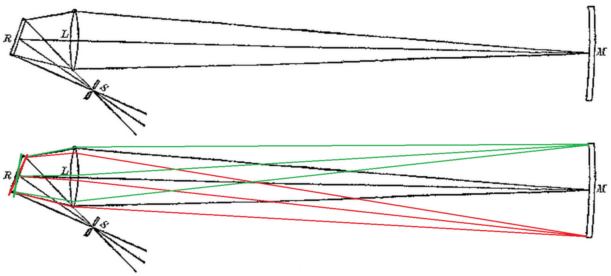- Series:Creation, Transcript English
Genesis 1:3
“And God said, Let there be light: and there was light.”
 I am always fascinated by the ingenuity of early science experimenters who made amazing discoveries. For instance, in 1850, the French scientist Léon Foucault created an experiment that would measure the speed of light.
I am always fascinated by the ingenuity of early science experimenters who made amazing discoveries. For instance, in 1850, the French scientist Léon Foucault created an experiment that would measure the speed of light.
Foucalt devised an experiment, based on wave theory, to calculate the speed of light. He set up two mirrors far apart, one of which could be made to rotate. A convex lens would be able to get an image of an object reflected in the rotate-able mirror and focus it onto the fixed mirror. This mirror would shine the light back again. The incident light was shone in, through a slit, at an angle to the rotate-able mirror. When all was fixed, the final image was made to appear at the same point as the slit. But when the mirror was set rotating, the image would be displaced from the slit. The faster the mirror rotated, the greater the angle at which the image was displaced from the slit. This, Foucault figured, was due to a different part of the wave hitting the rotating mirror. The rate of rotation is related to the angle of displacement, by a factor, which includes the speed of light. So Foucault was able to calculate that speed, eventually getting a very accurate value in 1862.
Now we better understand the complexity of the command “Let there be light”. It was God who created light and gave brilliant scientists the ingenuity to study His universe.
Author: Paul F. Taylor
Prayer: Father God, as You gave physical light to illuminate the world, so You give light to illuminate people’s minds. Thank You that we can research science because You have made a universe of order. Amen.
Ref: Michelson, Albert A. (1880). Experimental Determination of the Velocity of Light, < https://web.archive.org/web/20131101062011/http://www.gutenberg.org/files/11753/11753-h/11753-h.htm >, accessed 10/29/2018. Image: Albert A. Michelson, Public Domain.
